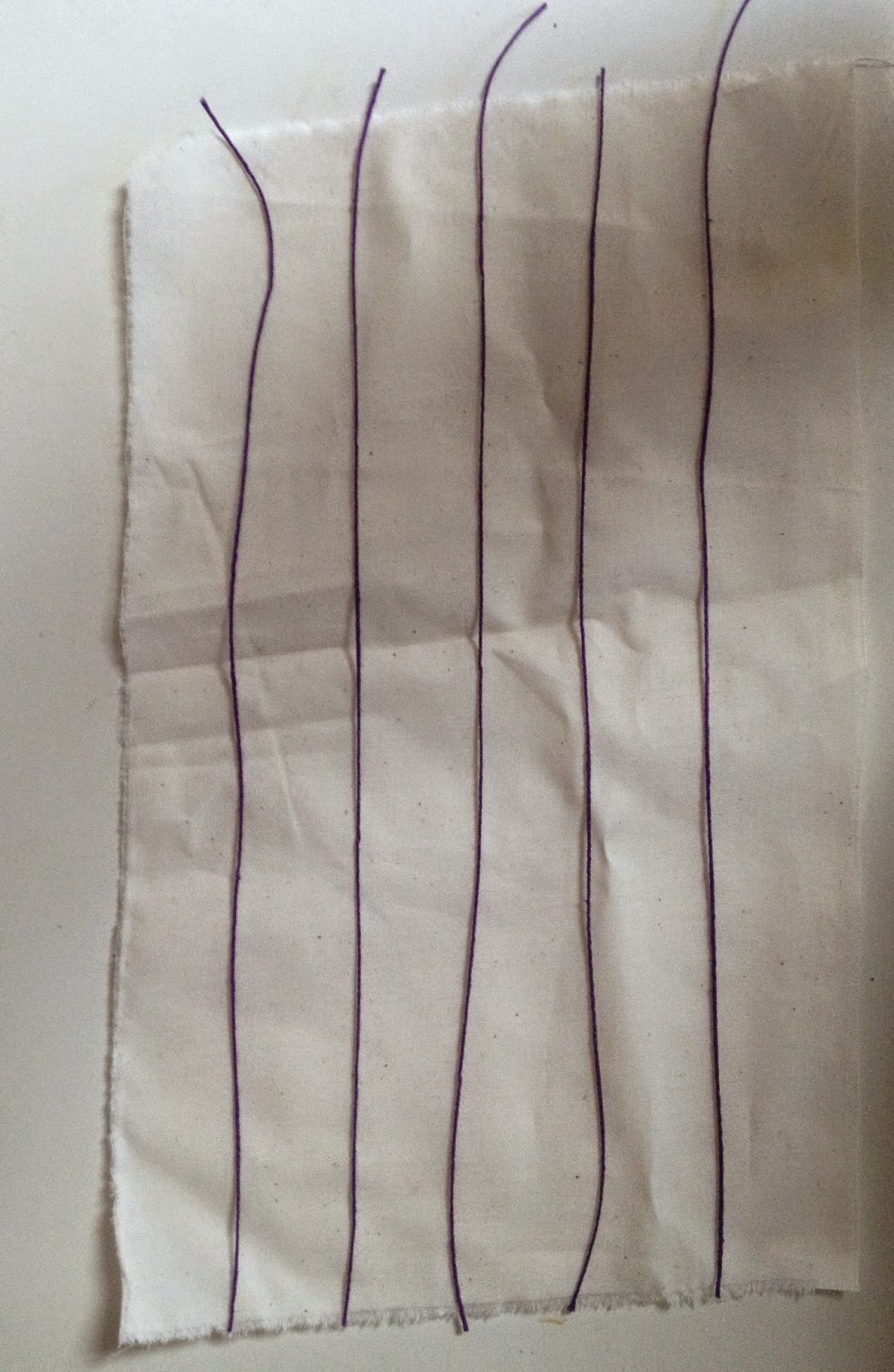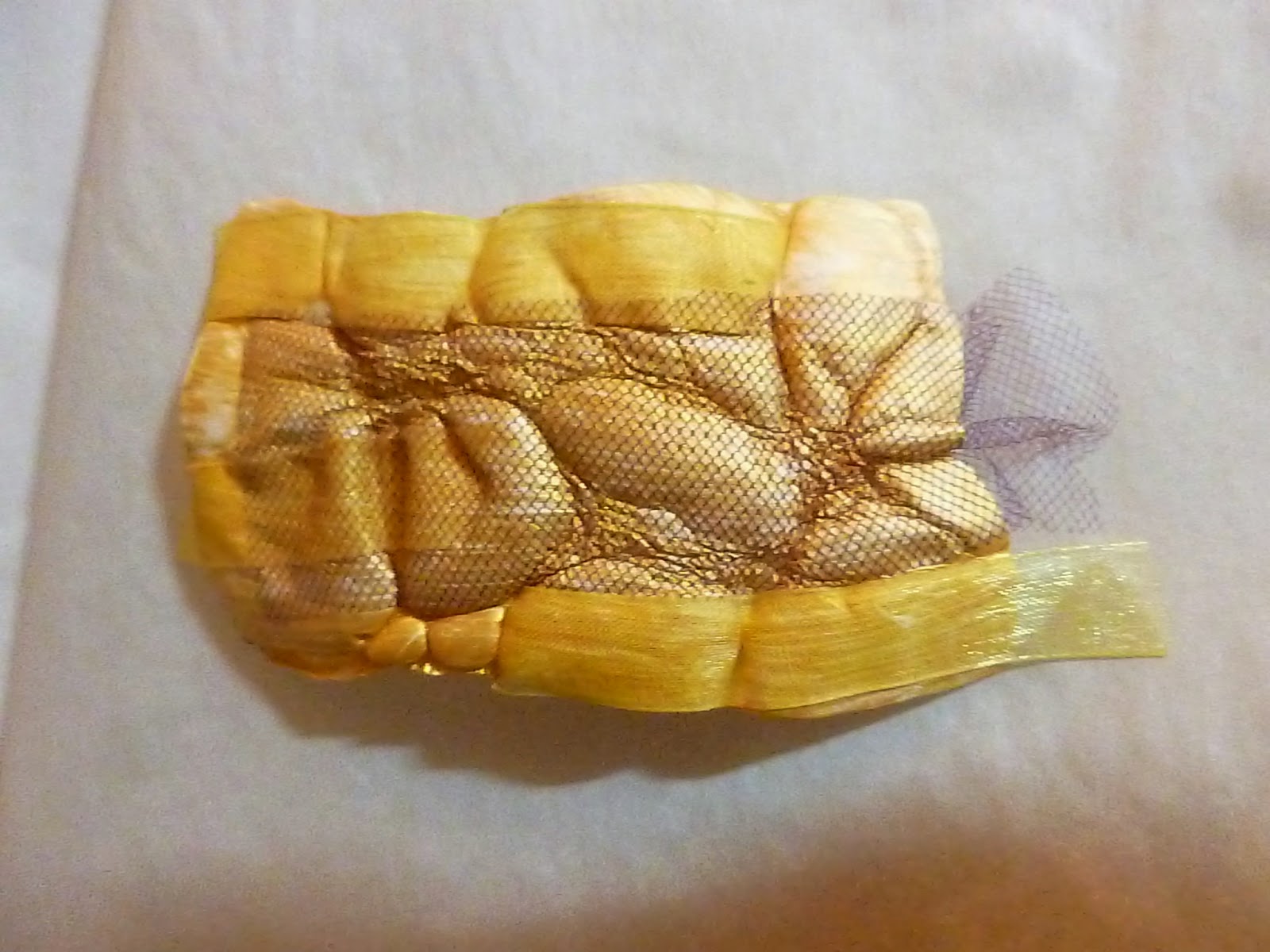So... when the gang got together, we went with the loosely tied approach BUT they used mostly blue yarn. The pot was boiling blue water so we thought we had lots of winners. The snippets above only faintly marked the silk and cotton scarf. Maybe the silk was partly to blame? More experiments, please.
The rest of the bundles looked like this before we opened them.
The cloth below was the one in the middle with the red rubber band wrapped fairly tight around a dowel. She laid strings on the cloth and folded it accordion style from corner to corner. She used both the blue and the purple strings.
This cloth with the distinct folds was the darkest one in the bundles photo. The beginning and ending are nice but the middle was only lightly marked.
The last silk and cotton scarf was the long one wrapped into a U shape. I can't remember how she wrapped this... but those marks look like magic writing.
So I promised to mail out eight samples of the strings that dyed cloth after being boiled for 30 minutes. Over on my personal blog, there are over 30 comments to date and, as of noon Central time on January 30, I going to pick the eight names and contact them via email for their physical addresses. Thank you for following my tutorial and your interest in knowing more. Many commenters have asked for advice on buying yarn that will work so I've ordered some new cotton warp to test what happens with fresh stock. I'll post an update! I'm taking a small risk because I can always weave it up if it doesn't bleed good enough for dyeing.



















































